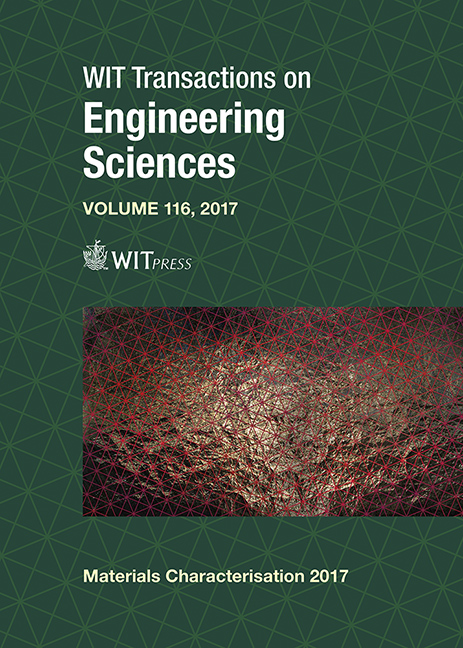CREEP RUPTURE OF WATER-ABSORBED GREEN COMPOSITE
Price
Free (open access)
Transaction
Volume
116
Pages
8
Page Range
281 - 288
Published
2017
Size
555 kb
Paper DOI
10.2495/MC170291
Copyright
WIT Press
Author(s)
HIDEAKI KATOGI, KENICHI TAKEMURA
Abstract
The creep rupture properties of a water-absorbed green composite were examined and assessed for long-term safety. Plain woven jute fiber cloth was used as a reinforcement and a poly-lactic acid (PLA) resin sheet was used as a matrix. A water-absorption test of this green composite was conducted at room temperature, for 24 hours: The water absorption rate at 24 hours was 8%. Quasi-static tensile tests of water-absorbed green composites were conducted at a crosshead speed 0.1, 1.0 and 10 mm/min; as well as on non-water-treated control material. Tensile creep tests of the non-water-treated and 8% water-absorbed green composites were conducted. The environmental temperature was room temperature. The maximum test time was 100 hours. We found that Young’s modulus and tensile strength of the non-water-treated and the 8% water-absorbed green composite increased with an increase in the strain rates. Young’s modulus and tensile strength of the 8% water-absorbed green composite were lower than those of the non-water-absorbed green composite, under all strain rates. Creep rupture strengths of the non-water-absorbed and the 8% water-absorbed green composites decreased with an increase of loading time. The creep rupture life of the 8% water-absorbed green composite was lower than that of the non-water absorbed green composite. Generally, the glass transition temperature of PLA resin was decreased by water absorption; therefore, the creep rupture property of the green composite studied was mainly affected, due to a decrease of the viscoelasticity of the matrix by water absorption.
Keywords
creep rupture strength, creep rupture life, green composite, jute, natural fiber, polylactic acid, resin, strain, tensile strength, water absorption





